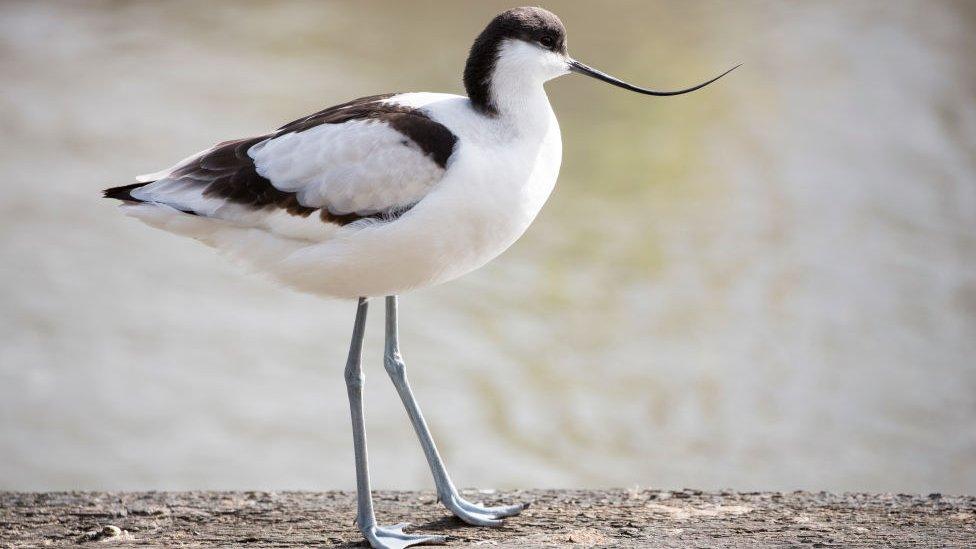Birdfair 2019: Britain's most beautiful birds
- Published

Check out the beak on this guy! This is an avocet and it's one of the animals you might see at this year's Birdfair, which is like Glastonbury for birdwatchers! This wader was pictures at Slimbridge Wildfowl and Wetlands Centre. It's got a really curved beak and is usually just black and white. Avocets disappeared for a while but thanks to a conservation project they began to thrive again back in the 1940s. Don't be fooled by how pretty they are - these guys can be feisty! Let's take a look at some more beautiful birds you can see in Britain.
The Osprey is a big and beautiful bird of prey. The creatures are brown and white with fierce yellow eyes. The birds were once thought to be extinct, but if you're lucky you can catch a glimpse of them in the UK. They have an amazing trick for catching fish - when they plunge into the water to grab their prey, they can twist one of their toes around to give a better grip! These incredible birds migrate south to Africa for the winter.
You may have seen one of these cute little birds in your garden. Blue tits are relatively common - you can also find them in woodlands, parks and gardens. They're famous for breaking the foil tops of old fashioned milk bottles on doorsteps and sipping the creamy top of the milk! You might also have heard them singing. They have a special 'tsee-tsee-tsee' song.
You'll hear these guys before you see them. The drumming of a great spotted woodpecker is a familiar sound of our woodlands, parks and gardens during early spring. The birds do this drumming to mark their territories. They have powerful beaks and special skulls to stand all that drumming! You can usually find them in holes in trees. If you want to spot a great spotted woodpecker, keep an eye out for the red splash on the back of their heads which is really obvious in flight.
It's hard to miss this guy - red kites are huge! Their wings are almost two metres wide. They have black wingtips and a pale head, with a beautiful rust-coloured body. At one time they were very rare in the UK, but thanks to conservation efforts they're back with a bang!
This is a white heron, also known as a great white egret. They like to stand in shallow water, waiting for fish and insects to approach, then pounce! They used to be rare but these enormous birds can now be seen around all kinds of wetlands.
Barn swallows might be small but they're very pretty and they stand out in flight, with their long tail. You can see them diving low over water and fields and roads scooping up insects, or lined up sat on overhead wires in the summer. Soon, they鈥檒l be making the epic journey back to Africa for the winter.
Kingfishers are brightly coloured but they're not very big which means they can camouflage surprisingly well. They love rivers, streams and wetlands, and will perch on low branches to watch their prey below. If you're a small fish, watch out if there鈥檚 a kingfisher about! Males have an entirely black bill, females have an orangey-red patch at the base. There are about 90 species of kingfisher around the world. The Australian 'laughing' Kookaburra - is the heaviest - weighing 300 grams.
This graceful grebe is a familiar sight on lakes and reservoirs. In the spring, they take part in an fancy dance, where they ruffle their feathers, flap their wings, shuffle their feet and swap bits of plants of weeds from the water with their mates. They were once hunted almost to extinction for their feathers. But thanks to efforts to save them, the population is slowly recovering,
- Published6 November 2018
- Published19 July 2018
- Published12 March 2021
